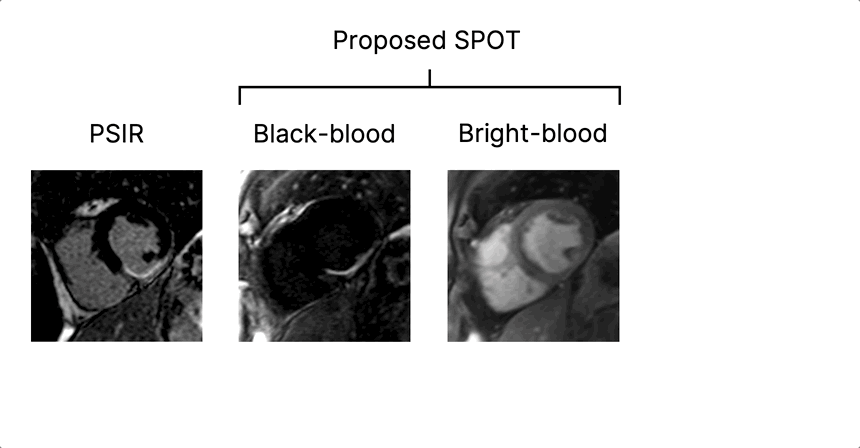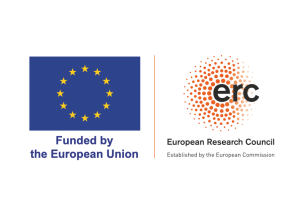
Project
A myocardial scar is like a « healed wound » in the heart muscle. It forms after a heart attack when a damaged tissue is repaired, but unlike normal tissue, the scar doesn’t function well, affecting the heart’s ability to pump blood efficiently. They can the cause of sudden death. SPOT technology allows for improved myocardial scar visualisation. Black-blood permits to detect the scar and bright-blood allows to locate it within the heart anatomy. A coloured fusion of both is provided for an improved visualization.
Abstract
Black-blood late gadolinium enhancement (LGE) techniques are increasingly being used to uncover myocardial scar patterns that may be otherwise confused with blood signal on conventional bright- blood LGE, especially when involving the subendocardium. With signal-attenuated blood and dark muscle representation, these techniques may however be hampered by a lack of anatomical information, making spatial localization of myocardial injuries a challenging task. Here we aim to assess the clinical performance of a novel LGE technique that combines both bright- and black-blood imaging in a single time-efficient free-breathing exam to obtain LGE images with unprecedented scar contrast and localization.


